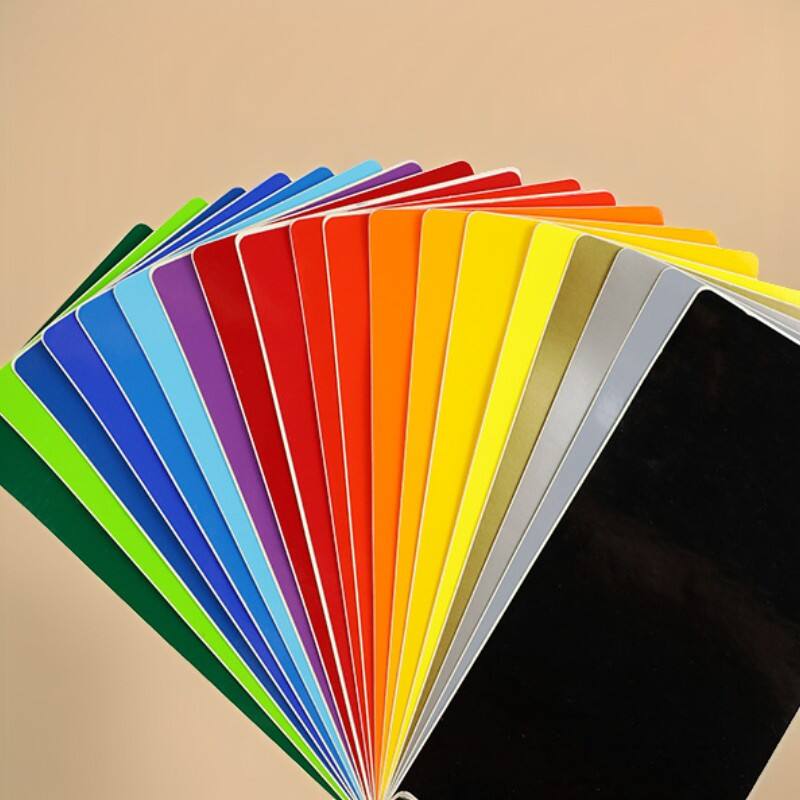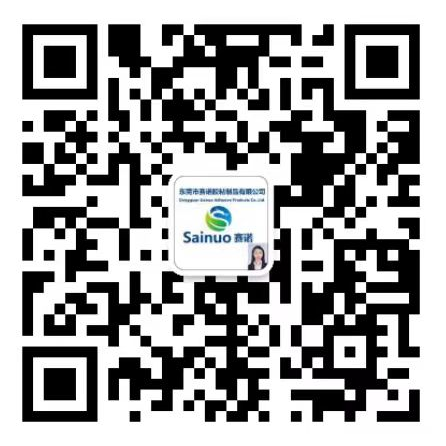التقدم في تقنية الأفلام اللاصقة الذاتية لتطبيقات صناعية
التقدمات التكنولوجية الرئيسية في الأفلام اللاصقة الذاتية
تكامل النانوتكنولوجي لتحقيق ترابط محسن
يتم إجراء ترقية كبيرة في عالم الأفلام ذاتية اللصق بفضل تقنية النانو، التي تحسن بشكل كبير من قدرة هذه المواد على الالتصاق ببعضها البعض. وفي قلب هذه الابتكارات توجد جسيمات وأنابيب صغيرة على مستوى النانو يضيفها المصنعون أثناء إنتاج الأفلام. وتعطي هذه الإضافات المجهرية للأفلام قوة التصاق أعلى بكثير وقدرة أفضل على الالتصاق بشكل عام. وقد أظهرت ورقة بحثية حديثة نُشرت في مجلة علوم وتكنولوجيا التصاق مدى فعالية هذه الجسيمات النانوية، حيث أثبتت أنها تزيد من قوتها تحت الضغط ومن تحملها للحرارة، وهي خصائص بالغة الأهمية عند التعامل مع الظروف الصناعية الصعبة. وما يميز المواد اللاصقة القائمة على النانو هو قدرتها على الالتصاق بالسطوح الصعبة التي تفشل الخيارات التقليدية في الالتصاق بها، كما أنها تدوم لفترة أطول أيضًا. وفي المستقبل، من المرجح أن تدفع هذه التطورات حدود الممكن فيما يتعلق بالأفلام اللاصقة في مجالات التصنيع والبناء وغيرها من المجالات التي تكون فيها الروابط الموثوقة ضرورة قصوى.
حلول لاصقة ذكية بقابلية التكيف مع درجات الحرارة
يمثل إضافة مواد لاصقة ذكية إلى الأفلام ذاتية اللصق تقدمًا حقيقيًا في علم المواد، حيث يمكن لهذه الأفلام الآن أن تتفاعل عندما تتغير درجات الحرارة المحيطة بها. نرى استخدام هذه المواد اللاصقة الخاصة عبر قطاعات مختلفة تكون فيها الحفاظ على درجات الحرارة المناسبة أمرًا بالغ الأهمية، خاصةً في تصنيع السيارات والأجهزة الإلكترونية. على سبيل المثال، كيف تقوم هذه المواد بتعديل نفسها بناءً على التغيرات الحرارية، مما يعني التصاقًا أفضل حتى في الظروف الصعبة. أظهرت أبحاث نُشرت في مجلة Advanced Functional Materials أن هذه الأفلام الحساسة للحرارة تدوم فعليًا لفترة أطول وتعمل بشكل أفضل تحت الظروف القاسية مقارنة بالأفلام العادية. حقيقة أن هذه المواد قادرة على التعديل الذاتي تعني أن الأداء العام للمنتجات أفضل، مع تقليل النفايات أيضًا، مما يتيح للشركات تحقيق نتائج جيدة في الوقت الذي تساهم فيه في حماية البيئة.
أفلام ذات أداء عالٍ للبيئات القاسية
الأفلام الخاصة التي صُنعت لتحمل الظروف القاسية تتعامل مع تقلبات درجة الحرارة الكبيرة وتقاوم التلف الناتج عن المواد الكيميائية العدوانية. وهي تلعب دوراً كبيراً في قطاعات مثل صناعة الطيران والتصنيع الثقيل، حيث يحتاج المعدات إلى التحمل طوال اليوم وفي ظروف قاسية. فمثلاً، في دراسة حالة تتعلق بحماية قطع الطائرات، يطبّق المصنعون طلاءات مُعدّة خصيصاً لحمايتها ضد التآكل والبيئات شديدة الحرارة أثناء عمليات الطيران. وتشير نتائج الأبحاث من مصادر مثل مجلة علوم البوليمر إلى ما نراه في خطوط الإنتاج، حيث تحافظ هذه المواد على قوتها حتى عندما تُدفع إلى ما وراء حدودها الطبيعية. وتعتمد المصانع في مختلف القطاعات الآن على هذه التكنولوجيا لضمان استمرار الإنتاج بسلاسة رغم التحديات البيئية المختلفة التي قد تواجهها.
التطبيقات الصناعية تقود الابتكار
السيارات: متطلبات تخفيف الوزن والمتانة
يأخذ مصنعو السيارات على محمل الجد استخدام مواد أخف وزنًا هذه الأيام إذا أرادوا تحسين كفاءة استهلاك الوقود والبقاء متقدمين على القواعد الصارمة الخاصة بالانبعاثات. خذ على سبيل المثال الأفلام ذاتية اللصق، فقد أصبحت مهمة للغاية في تصنيع قطع السيارات لأنها خفيفة الوزن لكنها في المقابل متينة بشكل كبير. نحن نراها في كل مكان تقريبًا، بدءًا من تجميع أجزاء التابلوه داخل السيارات وانتهاءً بتركيب الزخارف الخارجية على هيكل السيارة. وبينما تساعد هذه الظاهرة بلا شك في تقليل الأثر البيئي، فإن هناك فائدة أخرى أيضًا، إذ تؤدي السيارات بشكل أفضل عندما تكون أخف وزنًا. وبحسب بحث أجرته مجموعة من الخبراء في المجلس الدولي للنقل النظيف، فإن الانتقال إلى استخدام مواد أخف يمكن أن يزيد من كفاءة الوقود بنسبة تتراوح بين 5% إلى 10%. قد لا يبدو هذا كثيرًا حتى تبدأ في النظر فيما يعنيه ذلك بالنسبة للانبعاثات الكربونية الإجمالية الناتجة عن ملايين السيارات على طرقاتنا.
حلول التغليف المرنة باستخدام ورق الكرافت اللاصق
لقد شهدنا مؤخرًا ازدهارًا حقيقيًا في خيارات التعبئة المستدامة، وأصبحت ورق الكرافت ذاتية اللصق لاعبًا كبيرًا في دوائر الابتكار في التعبئة المرنة. ما يجعل هذه الأوراق خاصة هو أنها تستغني تمامًا عن المواد اللاصقة التقليدية مع الالتصاق الجيد ببعضها البعض. يسارع مصنعو الأغذية وشركات المنتجات الاستهلاكية الأخرى إلى اعتمادها لأن ورق الكرافت يتحلل بشكل طبيعي ويتمتع بدرجة لزوجة كافية لمعظم الاستخدامات. خذ على سبيل المثال الانتقال إلى تعبئة الكرافت في العديد من خطوط الأغذية الخفيفة مؤخرًا. أفادت الشركات بانخفاض إجمالي في النفايات نظرًا لأن الورق لا يتطلب طبقات إضافية للإغلاق، كما تزداد معدلات إعادة التدوير عندما لا يكون هناك بقايا لاصقة. بل لقد شهدت بعض العلامات التجارية الكبرى في منتجات الألبان تحسنًا في أدائها المالي بعد التحول، إلى جانب حصولها على إشادة من العملاء الواعين بالبيئة الذين لاحظوا الفرق في جودة التعبئة.
تركيب الإلكترونيات باستخدام أفلام لاصقة ذاتية شفافة
أصبحت الأفلام الشفافة ذاتية اللصق الآن ضرورية إلى حد كبير في تجميع الأجهزة الإلكترونية لأنها تسمح بمرور الضوء وتلتصق بسهولة دون عناء. فهي لا تحسن المظهر فحسب، بل تحمي أيضًا الأجزاء الحساسة من التلف، مما يفسر سبب استمرار الشركات المصنعة في اكتشاف استخدامات جديدة لها. لقد شهدت طلبًا متزايدًا باستمرار على هذه المواد اللاصقة الشفافة مع توسع صناعة الإلكترونيات واستمرار تطور علوم المواد واختراع خيارات أفضل. تشير الأبحاث السوقية إلى استمرار هذا الاتجاه، مع توقعات تشير إلى زيادة إيرادات الشركات المصنعة لهذه الأفلام بمليارات الدولارات خلال العقد القادم. بالنسبة لأي شخص يعمل في تصنيع الإلكترونيات، أصبحت هذه الأوراق اللاصقة بمثابة تغيير جذري من حيث الحفاظ على مظهر المنتجات وجاذبيتها وزيادة عمرها الافتراضي بين عمليات الإصلاح.
دراسة حالة: مادة PVC لاصقة ذات ألوان مختلفة
الخصائص الفنية: تركيبة السطح واللصق
يتميز مادة PVC ذاتية اللصق ملونة بأدائها الاستثنائي عبر مختلف التطبيقات. تصنع هذه المادة من وجه PVC متين يبلغ وزنه حوالي 110 غرامات لكل متر مربع، وهي تتمتع بمرونة تتيح لها الانحناء والتمدد دون أن تتفكك بمرور الوقت. ما يميزها حقاً هو الطبقة الخلفية من مادة أكريليك لاصقة دائمة تم تطويرها خصيصاً. وعلى عكس العديد من المواد اللاصقة القياسية، فإن هذه المادة تلتصق بإحكام بجميع الأسطح، من الزجاج الملساء إلى الأسطح الخشنة مثل الخرسانة. وبالمقارنة مع المنتجات اللاصقة القديمة المتاحة في السوق، فإن هذه التركيبة توفر التصاقاً فورياً وتماسكاً طويلاً، مما يجعلها خياراً مثالياً للمشاريع التي يكون فيها الاعتماد عليها أمراً بالغ الأهمية.
تطبيقات متعددة القطاعات: ملصقات البيع بالتجزئة إلى إشارات خارجية
ما يجعل مادة البلاستيكية الملونة ذاتية اللصق خاصةً هو اتساع نطاق تطبيقاتها عبر مختلف الصناعات. نحن نراها في كل مكان تقريبًا، بدءًا من المتاجر التي تعرض المنتجات ووصولًا إلى المباني التي تحتاج إلى لافتات داخلية وخارجية. يحب التجار استخدام هذه الملصقات اللاصقة لأنها تتميز بلونها الجذاب وتظل لفترة طويلة دون أن تبهت ألوانها. ولكن عند الحديث عن صناعة اللافتات، لا يرغب أحد في استخدام مواد رديئة. هذه المادة تتحمل بشكل ممتاز التعرض للمطر وأضرار أشعة الشمس، وحتى الاصطدامات العرضية من المارة. إن النظر إلى كل هذه الاستخدامات يوضح لنا ما تحتاجه الشركات فعليًا في الوقت الحالي، أي مواد تبدو جذابة من حيث الشكل وتعمل بشكل جيد تحت ظروف الاستخدام الواقعية. في النهاية، لا يملك أحد الوقت أو المال الكافي لاستبدال الأشياء التي تتهالك بسرعة كبيرة.
اتجاهات الاستدامة في تقنية الأفلام اللاصقة
حلول أوراق لاصقة قابلة لإعادة التدوير
يتزايد تركيز الشركات العاملة في مجال الأغشية اللاصقة على جعل منتجاتها مستدامة من خلال خيارات ورق لاصق قابل لإعادة التدوير. وينبع هذا التوجه من تزايد المخاوف بشأن صحة كوكبنا، بالإضافة إلى رغبة المستهلكين في بدائل صديقة للبيئة هذه الأيام. وقد بدأت بعض الشركات الكبرى في مجال التصنيع بالفعل باستخدام مواد قابلة لإعادة التدوير في أغشية اللصق الذاتي، مما يدل على جديتها في الحد من النفايات. لنأخذ على سبيل المثال كيف تُنتج بعض الشركات أغشية لاصقة تعمل بكفاءة ضمن أنظمة إعادة التدوير الحالية دون التسبب في أي مشاكل أثناء المعالجة. ما نراه هنا هو جزء من توجه أوسع نحو ممارسات صديقة للبيئة في جميع أنحاء الصناعة، حيث تسعى الشركات إلى استباق اللوائح الجديدة مع استقطاب العملاء الذين يهتمون بما يحدث بعد الشراء.
بدائل بيولوجية للأغشية التقليدية
تُعد الأفلام المستندة إلى مواد بيولوجية تغييرًا جوهريًا مقارنة بتلك الأفلام اللاصقة التقليدية التي كنا نستخدمها لسنوات. تُصنع هذه الأفلام الجديدة من مواد مثل نشا الذرة أو مواد أخرى مشتقة من النباتات، أي أنها تأتي من مصادر يمكن أن تتجدد، مما يجعلها أفضل بكثير للبيئة. عند مقارنة أدائها بالبلاستيكيات التقليدية، يتفاجأ معظم الناس بكون جودتها مشابهة تقريبًا لكن مع أضرار أقل بكثير على كوكبنا. بدأنا نرى شركات تتحول إلى هذه الخيارات القابلة للتحلل الحيوي في مختلف الصناعات. تحب شركات التعبئة والتغليف هذه المواد لأنها تتحلل بشكل طبيعي بعد التخلص منها دون ترك مواد كيميائية سامة. تتحول صناعة المواد اللاصقة بأكملها تدريجيًا نحو ممارسات أكثر خضرة، حيث يدرك المزيد من المصنعين أن استخدام مواد بيولوجية لا يعني التفريط في الجودة. تزداد شعبية هذه البدائل المستمدة من النباتات ليس فقط لأنها تساعد في تقليل النفايات، بل أيضًا لأنها تعمل بشكل جيد للغاية في الواقع.
النظرة المستقبلية والتحديات السوقية
موازنة الأداء مع اللوائح البيئية
تواجه صناعة أفلام المواد اللاصقة مصنعيها بمشكلات مستمرة عند محاولة التوازن بين فعالية المنتجات والقواعد البيئية الصارمة. تهدف معظم التنظيمات إلى خفض الانبعاثات المتطايرة (VOCs) والانبعاثات الضارة الأخرى، وهو ما يميل إلى التأثير في كيفية عمل المواد اللاصقة التقليدية فعليًا. يحتاج الشركات إلى إيجاد طرق للتغلب على هذه المشكلة مع الحفاظ على الجودة العالية. ولهذا السبب تستثمر العديد من الشركات موارد كبيرة في تطوير مواد جديدة مثل المكونات المستخلصة من النباتات والصيغ الأكثر صداقة للبيئة، والتي تقلل من الضرر البيئي دون التفريط في الخصائص التي تجعل منتجاتها جيدة. خذ على سبيل المثال المواد اللاصقة البولي يوريثين الحرارية. وفقًا لأحدث الأبحاث من شركة Technavio (2024)، فإن التحسينات التي طرأت على هذه المواد جعلتها أكثر صداقة للبيئة مع الحفاظ على قدرتها على تثبيت المواد معًا بشكل كافٍ.
الفرص في التغليف الذكي والتكامل مع تقنية RFID
يتطور سوق أفلام التصاق الذاتي بسرعة بسبب هذه الفرص الجديدة التي تأتي من التعبئة الذكية والتكنولوجيا RFID. الشركات تكتشف طرقاً إبداعية لمراقبة المنتجات بشكل أفضل وتتبعها عبر سلاسل الإمداد وتعزيز الإجراءات الأمنية على نطاق واسع. وتتوقع محللو السوق هنا أيضاً أرقاماً متنامية قوية إلى حد ما. خذ على سبيل المثال الملصقات بدون بطانة، حيث تشير شركة Research and Markets إلى أننا ننظر إلى معدل نمو سنوي مركب يتراوح بين 5 و7 في المئة فقط لهذا القطاع. هذه الملصقات تدمج فعلياً ميزات تكنولوجيا ذكية تجعل الأمور أكثر صداقة للبيئة في الوقت الذي تقلل فيه من الهدر وتوفير المال في العمليات. عندما تبدأ الشركات باستخدام أنظمة RFID بشكل صحيح، فإنها تلاحظ فعلاً تحسناً في كيفية إدارة مستودعاتها ومستويات مخزونها. قد تتحول بعض الصناعات حتى بشكل كامل بمرور الوقت حيث تصبح هذه الأنظمة المتصلة ممارسة قياسية بدلاً من كونها مشاريع تجريبية فقط.

 EN
EN
 AR
AR
 BG
BG
 HR
HR
 CS
CS
 DA
DA
 NL
NL
 FI
FI
 FR
FR
 DE
DE
 EL
EL
 HI
HI
 IT
IT
 JA
JA
 KO
KO
 NO
NO
 PL
PL
 PT
PT
 RO
RO
 RU
RU
 ES
ES
 SV
SV
 CA
CA
 ID
ID
 SR
SR
 SK
SK
 SL
SL
 SQ
SQ
 GL
GL
 HU
HU
 TH
TH
 TR
TR
 FA
FA
 MS
MS
 GA
GA
 MK
MK
 UR
UR
 BN
BN
 LA
LA







